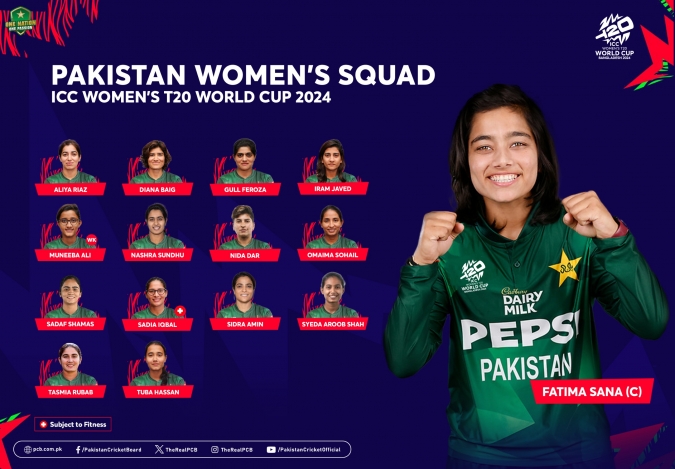Women’s cricket in Pakistan has come a long way, overcoming numerous hurdles to establish itself as an integral part of the nation’s sporting culture. From humble beginnings to competing on the international stage, female cricketers have showcased incredible resilience, talent, and passion. However, the road has been far from easy. This article explores the achievements, challenges, and future prospects of women’s cricket in Pakistan.
Achievements of Women’s Cricket in Pakistan
The Formation of the Women’s Cricket Team
The Pakistan Women’s National Cricket Team was officially recognized in 1997, marking the start of a new era. The team made its debut at the 1997 Women’s World Cup in India, an important milestone in the history of Pakistani sports.
Major Tournament Successes
- 2009 Women’s World Cup Qualifier: Pakistan’s women cricketers secured a historic win by qualifying for the ICC Women’s World Cup.
- Gold Medals at Asian Games: Pakistan’s women’s team achieved consecutive gold medals at the Asian Games in 2010 (Guangzhou) and 2014 (Incheon), defeating strong contenders.
- Improvement in ICC Rankings: Over the years, Pakistan’s women’s team has climbed up the ICC rankings, becoming a competitive force.
Notable Players and Their Contributions
Players like Sana Mir, Bismah Maroof, and Nida Dar have been instrumental in shaping women’s cricket.
- Sana Mir: A former captain and a pioneer, she became one of the top 10 bowlers in ICC Women’s ODI rankings.
- Bismah Maroof: An inspiring leader and top performer, her consistent batting has been crucial for the team’s success.
- Nida Dar: Known as “Lady Boom Boom,” Nida became the first Pakistani woman to take 100 T20I wickets.
Challenges Facing Women’s Cricket in Pakistan
1. Lack of Infrastructure and Facilities
Women’s cricket in Pakistan continues to suffer from inadequate infrastructure. Many players lack access to proper training facilities, gyms, and cricket grounds.
2. Limited Domestic Competitions
Unlike men’s cricket, women’s cricket lacks a robust domestic structure. Fewer tournaments mean fewer opportunities for young talent to emerge and develop.
3. Societal Barriers
Cultural and societal constraints have often discouraged girls from pursuing cricket. Families, particularly in rural areas, face challenges in supporting female athletes.
4. Financial Support and Sponsorship
Women cricketers in Pakistan struggle with low pay and limited sponsorship deals. Compared to men’s cricket, female players often face financial instability, which impacts their performance and morale.
5. Lack of Media Coverage
While men’s cricket enjoys massive media attention, women’s matches often go unnoticed. Limited broadcasts and media promotion make it difficult for fans to connect with the team and players.
Efforts to Promote Women’s Cricket
Pakistan Cricket Board’s (PCB) Initiatives
The Pakistan Cricket Board (PCB) has taken steps to improve women’s cricket:
- Launching domestic tournaments specifically for women.
- Organizing high-performance training camps to enhance fitness and skill levels.
- Offering contracts to female cricketers to ensure financial stability.
Emergence of Women’s Leagues
With the success of the Pakistan Super League (PSL) for men, discussions about a women’s PSL have gained momentum. Such leagues can offer exposure, attract sponsors, and inspire the younger generation.
Role of International Competitions
Participating in international series against teams like Australia, England, and India has boosted the confidence and skills of Pakistan’s women cricketers.
Future Prospects of Women’s Cricket in Pakistan
1. Development of Domestic Leagues
Establishing a competitive domestic structure will help identify and nurture young talent. More local tournaments can bridge the gap between domestic and international cricket.
2. Grassroots Programs for Young Girls
Introducing cricket programs in schools, particularly in rural areas, can encourage young girls to take up the sport. Building academies and organizing coaching camps can create a pipeline of skilled players.
3. Women’s PSL: A Game-Changer
Launching a women’s version of the Pakistan Super League will revolutionize women’s cricket. It will attract sponsors, boost visibility, and provide financial support for players.
4. Encouraging Corporate Sponsorships
Private companies can play a significant role by investing in women’s cricket through sponsorships, advertisements, and funding.
5. Media Promotion and Visibility
Better media coverage, including live broadcasts, social media campaigns, and player interviews, can help connect fans with the women’s cricket team.
The Role of Inspirational Players
Women cricketers like Sana Mir, Bismah Maroof, and young talents like Fatima Sana serve as role models. Their stories inspire a generation of girls to dream big and pursue cricket professionally.
Conclusion
Women’s cricket in Pakistan has achieved significant milestones despite numerous challenges. With greater investment, media support, and societal change, the future looks promising for female cricketers. By encouraging grassroots development, launching leagues, and fostering talent, Pakistan can become a powerhouse in women’s cricket. It is not just about breaking barriers but creating opportunities for future generations to thrive.
FAQs
1. Who is the most famous female cricketer in Pakistan?
Sana Mir is one of the most famous cricketers, known for her leadership and contributions to women’s cricket.
2. What are the main challenges for women’s cricket in Pakistan?
The main challenges include lack of infrastructure, societal barriers, limited domestic competitions, and insufficient media coverage.
3. Has Pakistan’s women’s cricket team won any major tournaments?
Yes, the team won gold medals at the Asian Games in 2010 and 2014.
4. What steps are being taken to improve women’s cricket in Pakistan?
The PCB has launched domestic tournaments, provided contracts, and improved training facilities to support women cricketers.
5. Is there a possibility of a Women’s PSL in Pakistan?
Discussions are ongoing, and a Women’s PSL could be a significant step in promoting women’s cricket in the country.


